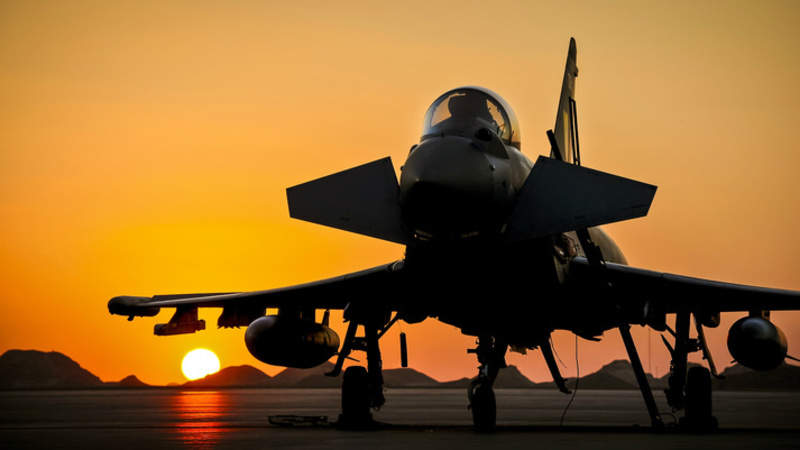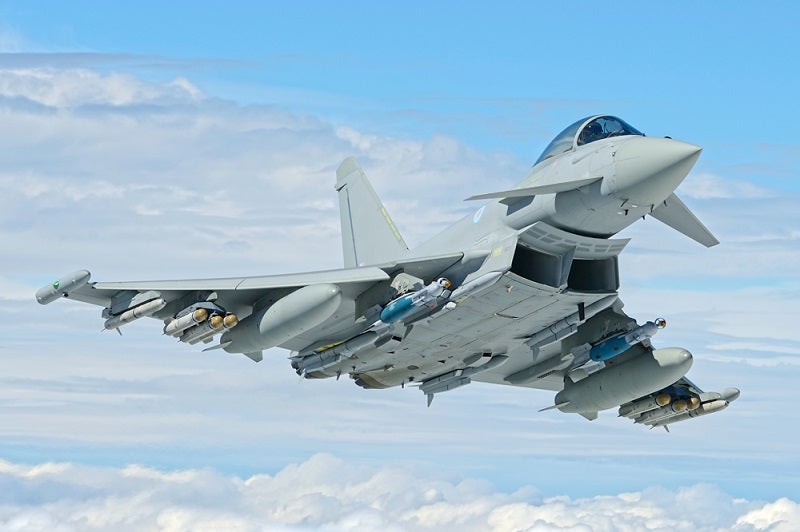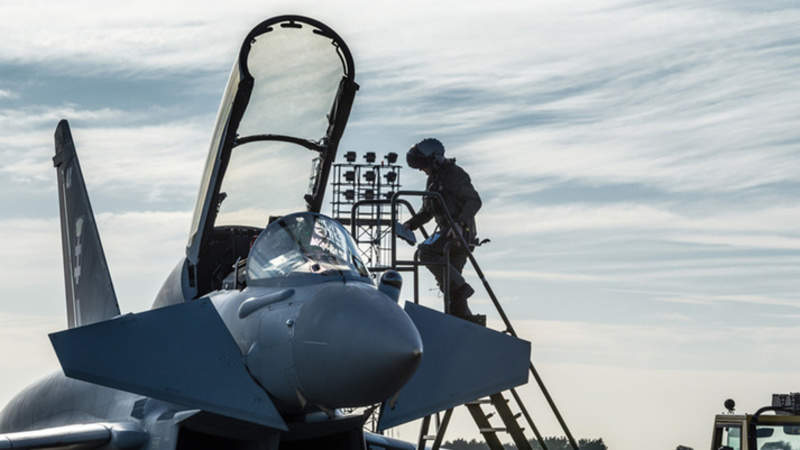
Typhoon Eurofighter: The Royal Air Force’s Dynamic Duo with F-35
The Eurofighter Typhoon forms the backbone of UK Royal Air Force (RAF) capabilities, fulfilling air-superiority missions such as quick reaction alerts over the Falkland Islands and air policing duties with NATO allies in the Baltic and Black Sea region. Since the retirement of the Tornado GR4, affectionately known as Tonka, the Typhoon is also the primary strike platform and carries out some reconnaissance tasks.
The fourth-generation multi-role combat aircraft arrived in the UK in 2003, since when it has become the pride of the RAF and is in a process of continuous upgrading. Tranche 3 is the latest production standard with improved electronics, radar and defence systems. The Typhoon is also set to receive the first capabilities of the Future Combat Air System (FCAS) programme, a project that aims to replace the capability that the Typhoons currently provide.
But upgrades are costly, and the UK Defence Command Paper said that some of the older aircraft will retire 15 years earlier than planned. The level of RAF expertise on air-superiority missions has also decreased simply because there are fewer aircraft to fly and train on since retiring the GR4s.
Why the Typhoon?

“If you look at the way that inter-service joint operations are planned, the way that investment is put forward into various platforms and the way the doctrine is set up, there is a tacit and, in some cases, explicit assumption that air superiority is a prerequisite,” says Royal United Services Institute air power research fellow Justin Bronk. At the same time, he says, because RAF air superiority has never been seriously challenged, it has fallen down the priority list until recently.
The Integrated Review and Defence Command Paper published this year set out plans for outgoing and incoming RAF capabilities. The Defence Command Paper stresses the importance of the UK contesting and even dominating airspace and describes the domain as the “future battlefield”.
Bronk is confident that the Typhoon will continue to form the backbone of the RAF until at least 2040, despite being more expensive upfront than the F-35A and costing similar to the F-35B.

US Tariffs are shifting - will you react or anticipate?
Don’t let policy changes catch you off guard. Stay proactive with real-time data and expert analysis.
By GlobalData“The F-35, especially the F-35B, is much more expensive to operate than the Typhoon. The Eurofighter doesn’t have a low-observable coating to maintain, but also because its supply chain is very much UK managed and the UK has more ownership and leverage,” he explains.
Since 2016, the UK Ministry of Defence (MoD) has worked closely with BAE Systems and Leonardo-Finmeccanica to slash the operating costs of the fleet at RAF Coningsby and RAF Lossiemouth. The 10-year Typhoon Total Availability Enterprise partnership has reduced costs by 30% so far. But there are other aspects to consider.
Bronk says: “Fundamentally the two aircraft fulfil completely different missions sets for the RAF. The F-35 was designed for penetrating hostile, well-defended airspace and conducting pinpoint strikes on key targets. If you want to fly into heavily-defended airspace and conduct strikes, then the F-35 is by far the most capable platform available at the moment.
“If what you require are quick reaction alert and air-policing, then probably you want something with greater range, with better performance at altitude that isn’t sensitive from a security point of view and is cheaper to operate. The Typhoon is much better suited to that role.”
These factors, and the fact that the Typhoon can carry greater weapon loads, all make the aircraft an arguably more effective option for carrying out strikes in semi-permissive and permissive airspace over Iraq and Syria, where RAF Typhoons have been deployed.

Early retirement
The answer as to why the MoD decided to retire Tranche 1 aircraft earlier is simple. They are the oldest jets in the Typhoon fleet and keeping them until 2040 would not be economically wise. Some of the oldest ones, like the Typhoon T1 two-seaters, have been already retired.
Bronk says: “The Tranche 1s are older and they’re much less reliable. They’re less capable of taking a lot of the modern upgrades. What this is leading to is the RAF having two different fleets within the fleet. That this because the older tranche ones have to have a different standard of upgrades, software and sensors because they’re not internally modified to take some of the later upgrades.”
This makes the Tranche 1 aircraft too expensive to operate, let alone keep up to date. The drawback is that reducing the number of aircraft can be hugely disadvantageous in the case of urgent deployment. But if the money saved through shortening the service life of older aircraft is invested in developing and procuring better capabilities for the remaining Typhoons, the move could be constructive.
According to the UK MoD 26 of the remaining 30 Tranche 1 Typhoons will be retired from service in the end of Q1 2025, indicating a flight of four aircraft will be retained, these likely being the air defence detachment based at RAF Mount Pleasant on the Falkland Islands.
The Tranche 1 fighters are the oldest versions of the Typhoon, of which 30 remain in service with the RAF, which also operates 107 of the more advanced Tranche 2 FGR4 variants. The Tranche 1 has no ground attack capability, and more limited sensors.
Tempest and the future of Typhoon
The older, less capable Typhoon models like the FGR4 remain useful for certain tasks such as aggressive training with the IX Squadron. But with a greater proportion of training moving to synthetic environments, fewer aircraft are needed to sustain the required trained pilot force and the benefit of older models is brought into question.
Team Tempest is working on the FCAS, the UK’s proposed sixth-generation combat aircraft concept. The project will not necessarily provide a replacement fighter aircraft, but the technology produced aims to support the same mission sets and capabilities the Typhoon currently offers.
The programme has evolved since inception, now known as the GCAP, with the addition of Italy and Japan into the partnership, offering a post-fifth generation capability for the three countries.
One of the promised capabilities of Tempest/GCAP is the various modes of operation that will combine crewed, uncrewed and optionally-crewed platforms. The spokesperson says that whereas there is a clear role for the Typhoon operating as part of a future force mix alongside both crewed and uncrewed aircraft, there are not any requirements for turning the Typhoon itself into an optionally crewed or uncrewed aircraft.
The project is set to begin delivering capabilities from 2035 onwards and will reach full operational capability in the 2040s. Whether the Typhoon can survive until that time, Bronk says, partly depends on how the aircraft is used in live operations in the meantime.
“If there’s suddenly a huge requirement for lots of task lines, then that will naturally eat into the life of the fleet, especially if there’s a shooting conflict of some sort,” he concludes.
Contributions and editing by Richard Thomas.


